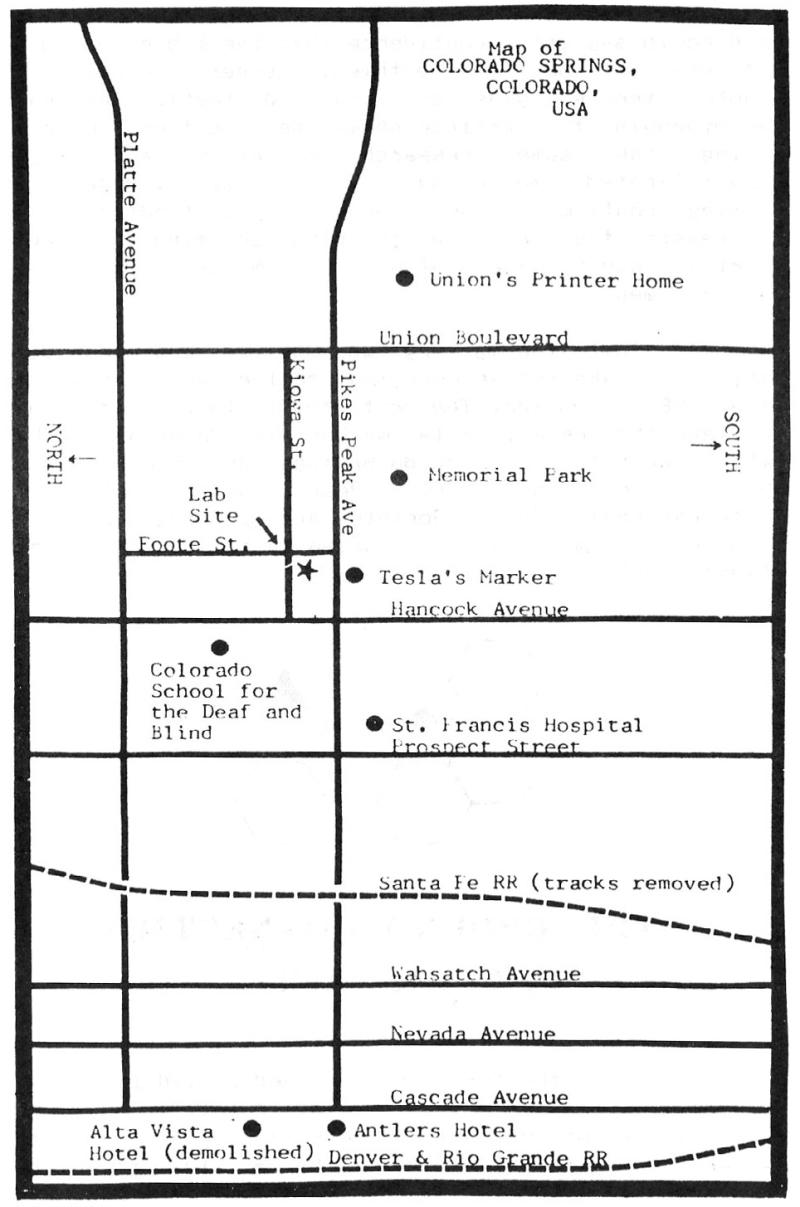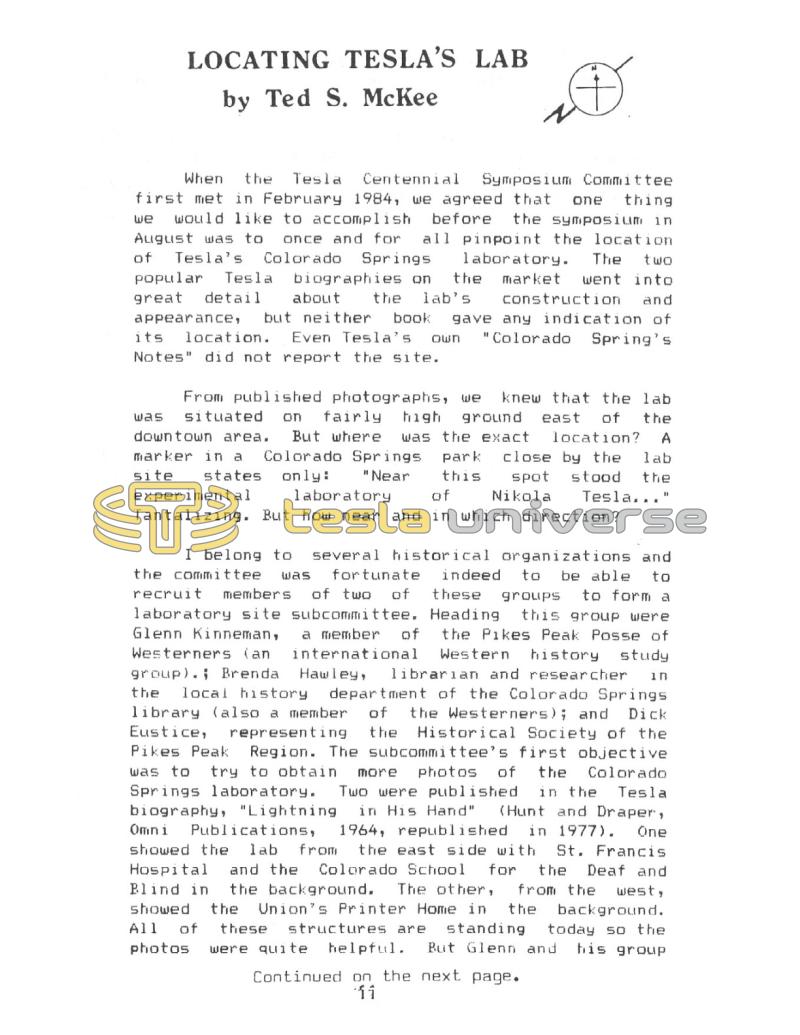
Nikola Tesla Articles
Locating Tesla's Lab
When the Tesla Centennial Symposium Committee first met in February 1984, we agreed that one thing we would like to accomplish before the symposium in August was to once and for all pinpoint the location of Tesla's Colorado Springs laboratory. The two popular Tesla biographies on the market went into great detail about the lab's construction and appearance, but neither gave any indication of its location. Even Tesla's own "Colorado Springs Notes" did report the site.
From published photographs, we knew that the lab was situated on fairly high ground east of the downtown area. But where was the exact location? A marker in a Colorado Springs park close by the lab site states only: "Near this spot stood the experimental laboratory of Nikola Tesla..." Tantalizing. But how near and which direction?
I belong to several historical organizations and the committe was fortunate indeed to be able to recruit members of two of these groups to form a laboratory site subcommitted. Heading this group were Glenn Kinneman, a member of the Pikes Peak Posse of Westerners (an international Western history study group.; Brenda Hawley, librarian and researcher in the local history department of the Colorado Springs librady (also a member of the Westerners); and Dick Eustice, representing the Historical Society of the Pikes Peak Region. The subcommittee's first objective was to try and obtain more photos of the Colorado Springs laboratory. Two were published in the Tesla biography, "Lightning in His Hand" (Hunt and Draper, Omni Publications, 1964, republished in 1977). One showed the lab from the east side with St. Francis Hospital and the Colorado School for the Deaf and Blind in the background. The other, from the west, showed the Union Printer's Home in the background. All of these structures are standing today so the photos were quite helpful. But Glenn and his group hoped to discover additional photos with greater background detail and, ideally, both north and south views.
The group turned to the archives of the Pioneers' Museum in Colorado Springs and it wasn't long before they struck paydirt. More photos including both north and south views and a highly detailed picture taken by moonlight (two-hour exposure), we discovered. They proved to be the key that enabled the laboratory site to be pinpointed with a high degree of accuracy.
As Glenn reported: "Armed with these new photos and topographical maps, we walked most of the park and every street in the residential neighborhood to the north. It soon became apparent that the lab had not been built in what is now Memorial Park because the ground wasn't high enough; it didn't match the photos. We took pictures of every street in the area from all four directions, compared them with the old photos and plotted everything on the topographic map."
Members of the group also talked with area residents and some old timers with no positive results. Glenn adds: "We were told by various sources that the lab had been in Cripple Creek, or Colorado City (now the western part of Colorado Springs), and "way out on the prairie" miles from town. Of course, none of this information was accurate so we went back to the map."
Several factors caused Glenn and his people problems. When the lab was constructed, only the three structures mentioned earlier existed in the area. There were absolutely no trees anywhere; those in the neighborhood today were planted years later. As far as can be determined, the lab was torn down in 1905 or 1906. But the residential neighborhood was not developed until shortly after World War II, a gap of 40 years.
Back to the neighborhood went the site group with the new photos, topographic maps and copies of the old photos. Again they walked the area street by street, gradually narrowing the site location. On August 4, 1984, at a meeting of the Symposium Committee, Glenn announced that he and his people were satisfied that they had located the site at last and could say with confidence that the laboratory was at what is not the southwest corner of Kiowa and Foote streets (plus or minus 50 feet). The map accompanying this article shows the location. Later, using the same research materials and more sophisticated measuring devices, an independent survey confirmed the subcommittee's findings and increased the accuracy to plus or minus 5 feet north-to-south and plus or minus 10 feet east-to-west.
At last the mystery was solved and Glenn was able to make the announcement on opening day of the 1984 Symposium. The next step is to redesign and replace the present Tesla marker in Memorial Park, which the City of Colorado Springs has agreed to do. Members of the Pikes Peak Chapter of the International Tesla Society are working on this project and will report progress in future issues of "Tesla '85".

